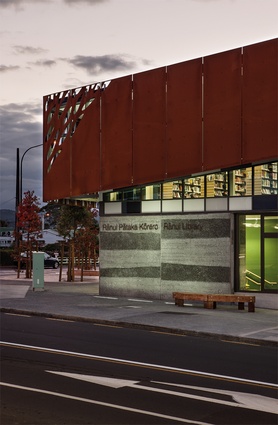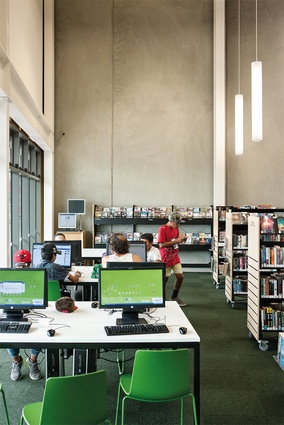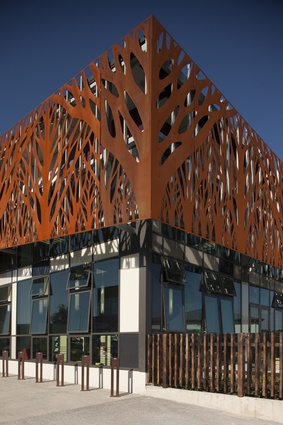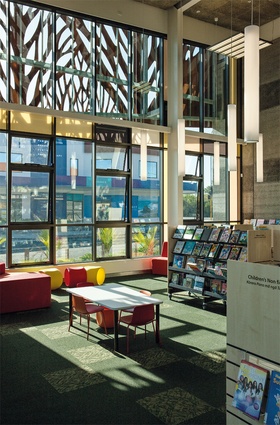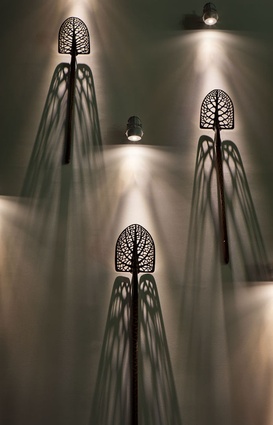Community minded: Rānui Library
Rānui is a growing community with a high proportion of young people and low-income families. It could hardly be called a planned suburb; rather, it has been allowed to grow. It has crescents and drives but no centre. It has churches and a mosque but few places for everyone. It has parks but only one hall – and that was established by citizens, not the council.
The new library has been designed to fill the gap and meet the community’s needs. Auckland Council wanted the library to be the centre of the community so it has been designed to provide both library services and community spaces. Like all of the new libraries being built around Auckland, Rānui library has been designed as a flexible space. The bookshelves can be pushed aside to make room for activities.
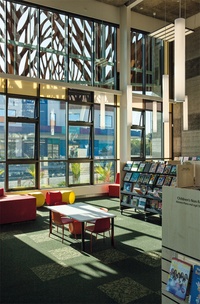
Also, the community was engaged in the design process. Jasmax organised workshops to allow Rānui to say what it wanted. The locals’ wish was for a library of a sustainable design that reflected their history, was friendly to children and provided computers.
The design that came out of this work is a two-levelled, 800m2 building, across the road from the existing library, built in 1995. While that building stood back from Swanson Road, the main road running through Rānui, this new building stands prominently on its corner with Armada Drive. It has a prominence the old library was denied. And its size and shape give it a singular presence in the forest of brick-and-tile houses.
A Corten steel screen wraps the upper storey. To let light in, the screen is perforated at two corners by a tree pattern, designed by Nelson artist Nic Moon and reflecting the forest of the Waitakere Ranges that begin just beyond the suburb’s limits. Moon was brought into the project to integrate art with architecture, working with Lars von Minden of Jasmax to make The Great Forest, the sculpture that dominates the interior.
Here, the tree theme is continued in other media; locally sourced clay was used to paint trees on the wall, while the sculpture’s centre is a set of five shovels incised with native plant leaf skeletons from local trees. The community’s involvement was continued by inviting local people to contribute their hand prints to the work. Five hundred people, mostly children, have left their marks.
Several different reading spaces have been created: areas for children and for young adults, a quiet place for adults, and a lounge in which to read magazines and newspapers. A fireplace is provided for winter reading, while a courtyard and a terrace are available for outdoor reading.
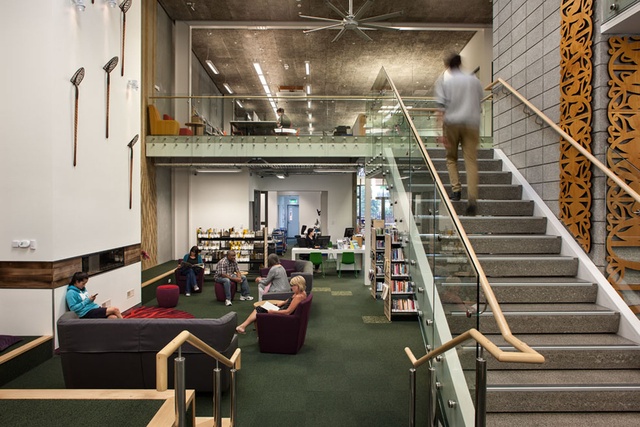
This is an architecture that reflects its location: the building’s design includes references to Rānui’s history of kauri forests, sawmills and market gardens, while Sunnah Thompson designed tukutuku panels that tell the story of Te Kawerau a Maki, the tangata whenua of Waitakere City.
Out in the last suburb of West Auckland, you do not see buildings like this. There is little in Rānui that is designed or that is particular to the place. Most buildings here could be anywhere. Rānui library is remarkable in itself for bringing contemporary architecture to a place that seemed to have been forgotten by the authorities, and for involving the community in its form and its functions.


